 |
||
|
||
| ||
The future launch of Compro VideoMate V550 on the Russian market renders a more optimistic situation on the market of stand-alone TV tuners for computers. Nevertheless, a single model competing with AVerTV Box 7 Live/AVerTV Box 9 from AVerMedia Technologies Inc. can hardly change the status quo radically. Saturation of a market requires the presence of other manufacturers. We cannot say that the products from Kworld Computer Co., Ltd., Greenwood, AG Neovo are well spread now, but other manufacturers may also try their hand here. Tuners from Taiwanese Leadtek Research Inc. are frequent guests in this section of our web site. The latest model that allows to watch TV programs on a monitor without a computer is no exception. Figure Two in the name of the card is explained by the first model, which we unfortunately failed to get for our lab. The list of reviews of modern models of stand-alone TV tuners that can be found on the Russian market:
Package Contents
We have already seen the new box design for multimedia products,
when we tested WinFast
DTV2000 H. Only the palette is different — black-and-red
instead of black-and-green. The box is more compact, because it's
higher than usual and bundled components are arranged
tightly in two layers inside it. 
The bundle is traditional for devices of this class:
Design and specification WinFast TV Pro II specifications:
Note that this device supports video output at 85 Hz (!), which allows to use this tuner with CRT monitors. The exterior of the TV Tuner is appeasing thanks to the neutral colors (greyscale), contrasting labels, and no sharp corners. But the device is still not garishly roundish, like the competitor from Compro Technology. Indicators are also in the same style, dim red LED reminds of consumer electronics. A nice design, all in all. WinFast TV Pro II does not break any miniaturization records, the tuner is close to Neovo TV-02 in these parameters. However, it has a positive side - good static stability both in vertical and in horizontal positions. You can control the tuner with symmetrically arranged buttons on the rear and top panels. Volume control and channel buttons are also used to navigate the menu. The set of connectors is not very original. The front panel houses S-Video, composite input, and 2 x RCA jacks.
The rear panel contains a power connector, VGA Out, miniDIN 9-pin for a video card, line-out, audio-in (both of them are mini-jacks 3.5 mm), composite video-out (!), and an antenna jack.
 The main chips are located on the same PCB side as the HF unit, though elements are arranged on both sides of the PCB.
WinFast TV Pro II is the first stand-alone tuner in our lab, which is equipped with a TCL MPE05 selector from Huizhou TCL King High Frequency Electronic Co (Mk3 form factor). Note that the PCB layout also allows to use Mk2 selectors.
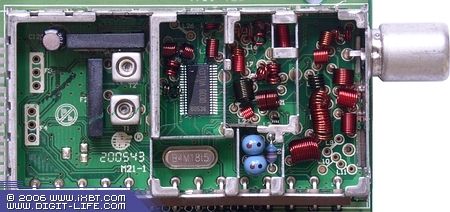
A heatsink covers AL260C video processor from AverLogic Technologies, Inc. Despite the similar names, this company, founded in 1996, has nothing to do with AVerMedia Technologies.
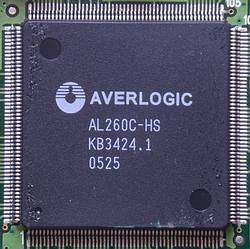
A 9-bit SAA7113H ADC from Philips Semiconductors is used for analog-digital conversion. 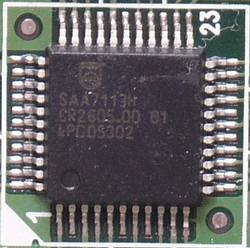 Philips TDA9874AH demodulator/audiodecoder on the daughter board (!) is responsible for decoding stereo audio.
The tuner uses the MRT M80641-3 microcontroller.
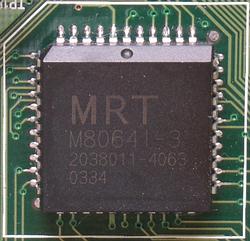
Besides, the board contains a EN29F512 flash memory chip (512 Kbit, 5V) from Eon Silicon Solution, Inc.
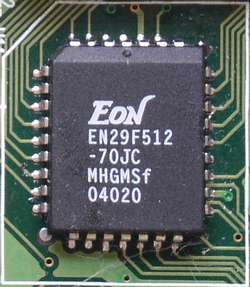
and a 16MB SDR memory module from Integrated Circuit Solution Inc.

Testbed configuration
We used Samsung SyncMaster 797DF (CRT).
Configuration
The on-screen display is pseudo-graphical to make the delays between menu items as little as possible. The menu is original - it contains 14 (!) single-level sections, the icons are arranged into two rows The menu turned out convenient, though we feared it wouldn't be. Perhaps, its resemblance to monitor menus helps here. For some reason, each time you switch the tuner on, the first call to the menu does not show expected options, but offers to reset the settings. This approach is overcautious. 
The order of menu items leaves no chances to describe them consistently. So we'll have to start from the twelfth option in succession (or the fifth option in the bottom row, if you wish) - Regional settings
 It's located
after the TV source selection (air/CATV).
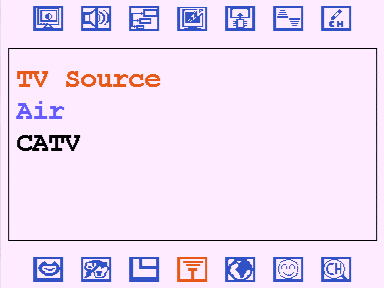
The last section is responsible for scanning channels. You can scan by channels or frequencies, and finetune.
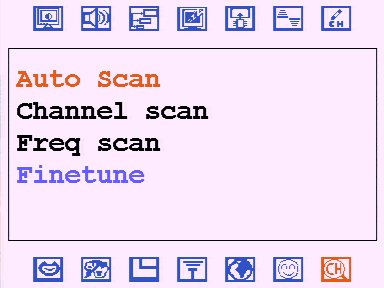
Video settings (brightness, contrast, tint, saturation) are applied to all channels. There are no presets. 
A separate section is responsible solely for volume control.

The next option is configuring resolutions (up/down buttons) and frequencies (right/left buttons).
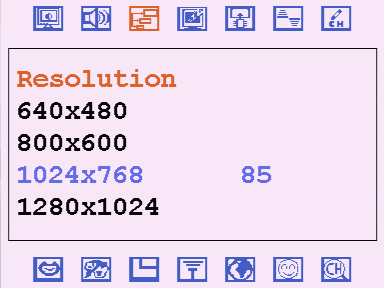
Having selected a resolution, you should proceed to the sleep setting (10, 30, 60, 90, disabled).
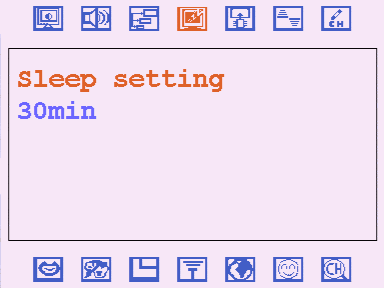
Let's skip the settings reset option and proceed to the screen mode selection. You can choose 4:3 or the increasingly popular 16:9 mode for wide monitors. 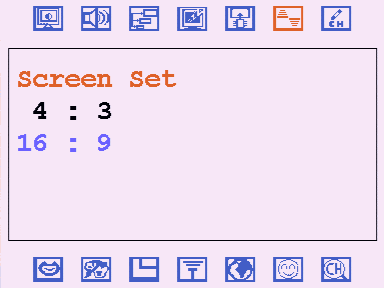
The last section in the top row is responsible for sorting and deleting channels.
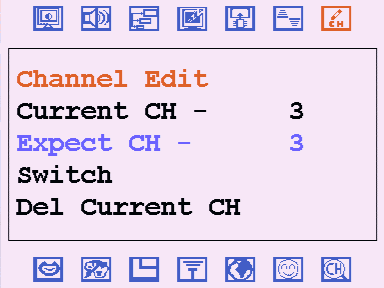
The bottom row starts with a language selection. Along with three Asian languages, You may choose English, French, German, or Spanish. No Russian.

There are three transparency options for the on-screen menu

and a separate option to position OSD.
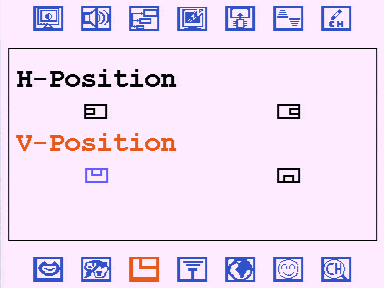
The last option but one adds channels to the list. 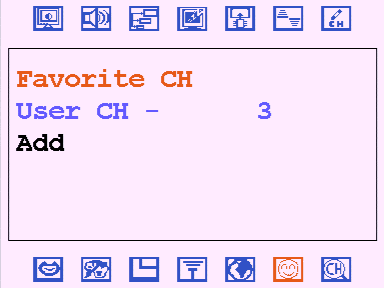
Quality
We have already mentioned good reception quality of the latest generation of TCL HF units in our review of FlyTV Prime 34 FM rev. I. WinFast TV Pro II only confirmed the results, having demonstrated steady reception of all channels, including Channel 11 (223.25 MHz) - the most problematic channel for Philips Mk5 11 selectors. To avoid misunderstanding, it's a local problem that does not depend on a given frequency. On the whole, image quality is on a good level, deinterlacing is also up to the mark. We used VGA2USB from Epiphan SYSTEMS inc.
to take screenshots. No color mode selection can be explained by the automatic detection procedure supported by the ADC - we had no gripes with its operation in the process of our tests. We have no gripes with the audio quality either. But no additional timbre and balance controls, available in competing devices, is a minor disadvantage (in my opinion) of this model. When rewinding a tape in a videotape recorder connected to the composite jack, we noticed no artifacts or synch failures. Unfortunately, a connected tuner brings distortions into the video card-computer path. A CRT monitor outputs a slightly blurred image at 75 Hz or higher. Alas, connection peculiarities that limit a user to the bundled non-standard cable do not allow us to test the tuner with another cable. Indeed, LCD owners may fear not this peculiarity, but the video section might have been better with the maximum refresh rate of 85 Hz. We didn't notice any interferences on the monitor from the power supply unit in the process of tests. A few words about video output. Like AVerTV Box 3, the signal is taken directly from the receiver. So all control features are limited to switching between channels. On the other hand, there are no competing stand-alone models with composite output. Infrared remote control
As the remote control has no 12 upper buttons, it looks a tad unusual for a user accustomed to PCI tuners from Leadtek. However, it did not affect its good ergonomics. The device offers an interesting way to switch between channels using digit buttons. If there is no signal, the tuner automatically switches to the next channel. The Scan button on the remote control calls the channel scan menu. The Audio button switches between sound modes (Stereo, Mono, SAP). When you switch between resolutions, you also go through the same modes with different refresh rates. The MEM button displays a list of favourite channels, M+/- allows to add/remove channels. The remote control uses two bundled AAA batteries. Conclusions
Pioneers should be respected. That's why WinFast TV Pro II is rewarded by our web site for its support for 85 Hz. For that and for the video output, as it has become such an exotic thing now.
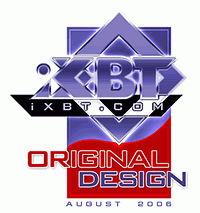
Pros
Cons
Fortunately, WinFast TV Pro II did not have the same sorry fate as WinFast WalkieTV. The second modification of the stand-alone tuner from Leadtek Research can stay up in the nasty sea of the market. Thanks to the 16:9 screen mode and stereo decoding, this model competes well with AVerTV Box 7 Live. Its maximum refresh rate surpasses even the top-functional Compro VideoMate V550. We can only hope that Leadtek WinFast TV Pro II will appear soon on the Russian market at the price, which will not differ much from the recommended $100.
Write a comment below. No registration needed!
|
Platform · Video · Multimedia · Mobile · Other || About us & Privacy policy · Twitter · Facebook Copyright © Byrds Research & Publishing, Ltd., 1997–2011. All rights reserved. |